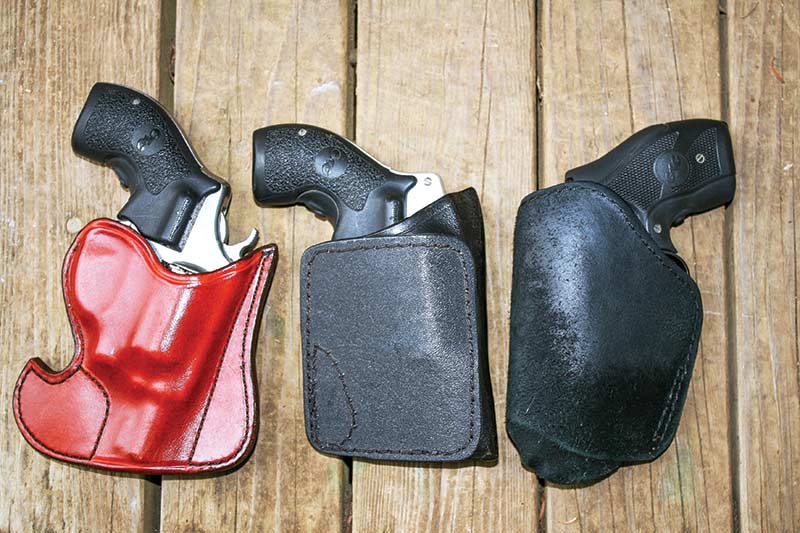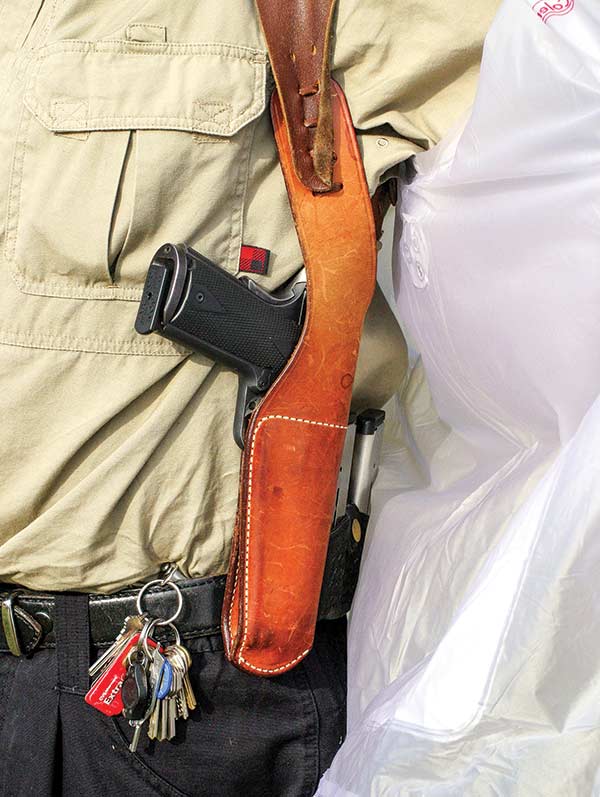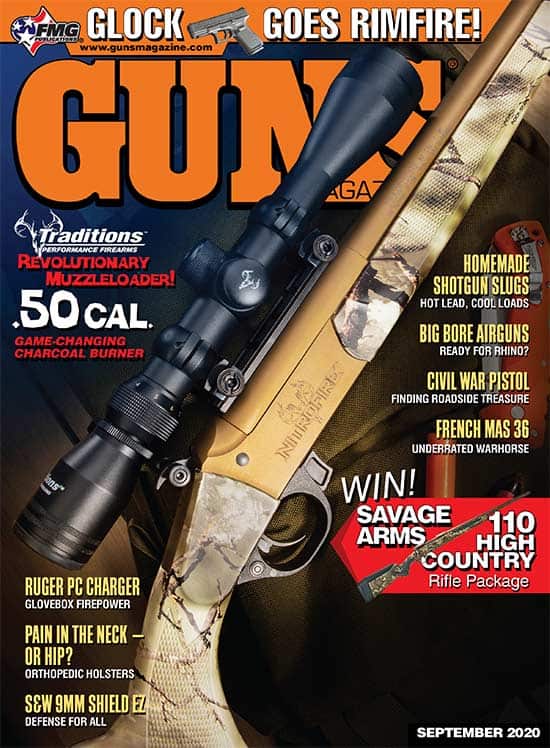The Orthopedic Holster
Holsters to help with healing
When illness or injury make it hard to carry your handgun, an alternate carry option may solve the problem.
Recently, on a private gun forum, a friend of mine mentioned he had temporarily stopped carrying a gun because excruciating lower back problems made it hurt to wear a serious fighting handgun on his hip — where it had been up to and since retirement from his long and honorable police career. Here’s what I suggested:
“… consider a shoulder rig. When I went through hell with my lumbar in the early ’90s, the doc told me to stop carrying a gun on my belt to take the weight off my hips. I told him I had to carry because I was on call for emergencies and asked about a shoulder holster. He said, ‘That’ll be okay so long as you carry a same weight gun on each side.’ I asked him if he was kidding and he said, ‘No. On one side only your body can unconsciously bias its weight one way or the other and your back and hips will be a bit out of alignment.”
I put together a half-assed double shoulder rig and pulled two S&W Aircrewman K-Frame .38s out of the collection with midrange wadcutters because of the aluminum cylinders, and felt like Sonny Crockett’s older stranger brother. I did some experimenting and found a Galco Shoulder System with loaded Colt LW Commander .45 on one side and two spare mags, cuffs in the optional cuff carrier and a Spyderco Police knife clipped to the accessory side of the harness equaled each other about to the ounce. That got me through until the back healed up. So, you might want to give something like this a shot.”
My friend has since ordered a Galco shoulder rig. I sincerely hope it helps him as much as it did me.
The shoulder holster can have other advantages. In 2013, I was in a helicopter crash which caused a lot of pain in the right hip area before it healed. The damage was to muscle tissue, not bone structure, so balanced weight on either side of the torso wasn’t a concern. A vertical Bianchi X15 shoulder holster carried a full-size combat handgun under my left arm during the healing process with the spare ammo not at all uncomfortable on my belt until I healed up.
Other Carry Options
Got some sciatica going on in the area of the hip holster? The shoulder rig can fix it but so can a couple of other types of carry. For many folks the Appendix Inside the Waist Band (AIWB) carry, currently the rage among the cognoscenti, may do the trick. If the belt itself is causing aggravation, suspenders work wonders.
AIWB carry is also one answer for rotator cuff injuries or other shoulder problems limiting your ability to reach to, and particularly behind, your dominant hand side hip. When I tore a rotator cuff and left deltoid on the same side, I had a lot more strength and range of movement reaching for a gun at front centerline than going for one on or behind my hip on the injured side.
Cross-Draw
The cross-draw holster — carrying the gun on the non-dominant side at waistline opposite gun hand, butt forward — was popular among cowboys in the old west because it worked particularly well when on horseback or while seated at a card table in the wrong saloon. It solves other range of movement issues still relevant today. Photos from yesteryear of real LAPD plainclothes cops show, just like on the long-lived Dragnet TV series, a whole lot of them carried cross-draw. The reason was until the third quarter of the 20th Century, LAPD required their detectives to carry standard-size service revolvers instead of snub-nosed “Detective Specials” (Jack Webb’s iconic Sergeant Friday character being a notable exception). The standard LAPD weapon at the time was a 6″ Colt or Smith & Wesson .38 Special.
Drawing a gun this long from a high-ride concealment holster on the strong side hip was awkward, often requiring the lawman to rock his shoulders dramatically to one side to clear the long tube. Cross-draw, with such a gun, was much faster. It turns out to be also a good deal faster for those with impaired range of movement in the shoulder.
Ankle and pocket holsters can also have a place in “orthopedic pistol packing.” Just remember it’s awkward as hell to draw from a pocket holster while seated, though remarkably quick in the same position from the ankle. For older folks, a concern with ankle holsters is blood vessel constriction which could aggravate something like phlebitis. When arthritis hit my knees and ankles I noticed the weight of an ankle holster caused discomfort.
Tailor the tool to the task.
The task — being able to quickly defend yourself and your loved ones — may be compromised by physical impairment due to illness or injury and you must adapt accordingly. This is what the helpful device I call “the orthopedic holster” is all about.

Get More Carry Options content!
Sign up for the newsletter here:







